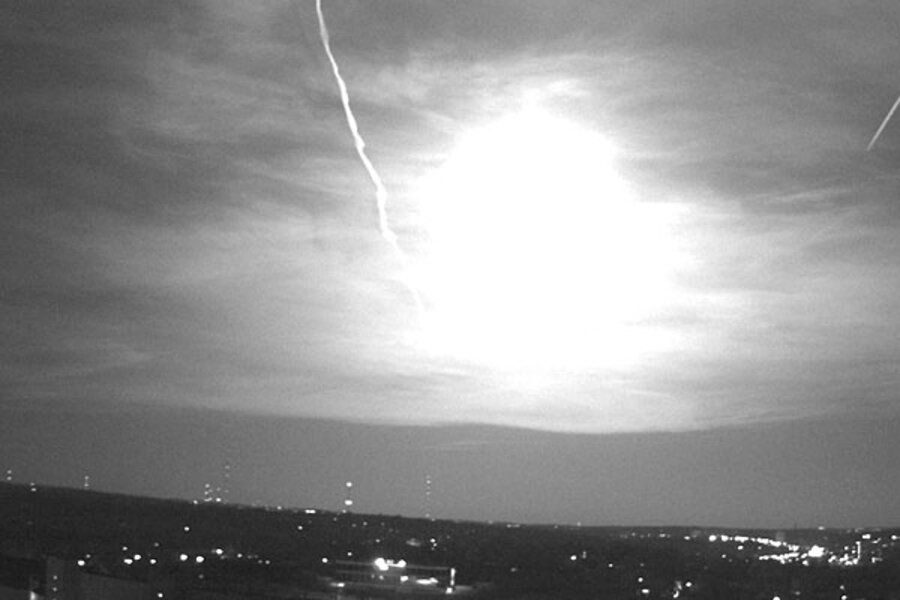Humongous exploding fireball in sky probably a meteor, say scientists
A thunderous boom accompanied by a greenish fireball hurtling across the sky shattered the morning tranquility of many residents of Nevada and northern California on Sunday.
According to the Associated Press, the unannounced pyrotechnics prompted a flood of 911 calls in both states.
"It made the shades in my room shake hard enough to slam into the window a couple times," one Reno, Nev., resident, who initially thought it was an earthquake, told the AP.
"It knocked me off my feet and was shaking the house," said a mother in Arnold, Calif., who said she heard a booming sound at about 8 a.m. "It sounded like it was next door."
Those who happened to be looking at the sky say they saw a blazing light hurtling across the sky.
"It is an event that makes you glad to be alive," Matthew Neal of San Francisco told the AP. "The main body was bright green and the head was bright red and white."
The fireball, which was visible in towns some 600 miles apart, was almost certainly what astronomers call a bolide, an exceptionally bright meteor. The loud crack was likely a sonic boom caused by the meteor's shockwave.
SPACE.com's Denise Chow quotes Bill Cooke, the head of NASA's Meteoroid Environments Office at the Marshall Space Flight Center in Huntsville, Ala., who estimated that the meteor was moving at about 33,500 mph, weighed more than 150,000 lbs., and was roughly the size of a minivan. The energy released by the meteor as it entered the atmosphere was equivalent to about a fourth of the energy of the atomic bomb dropped on Hiroshima, he said.
No crater or debris has yet been found.
The bolide came during the peak of the Lyrid meteor shower, which occurs annually as the earth passes through the icy tail of Comet Thatcher. Cooke told SPACE.com that it was unlikely that the two phenomena were related, but that he would not rule it out.
In any case, this meteor was probably composed of stuff much, much denser than ice.
Bolides are rare, but not completely unheard of. At about 10 p.m. on April 14, 2010, the night sky over southern Wisconsin turned to day as a meteor exploded in the atmosphere. NASA later estimated the size of that meteor to be about 3.3 feet in diameter. The following August, residents in Alabama spotted a fireball caused by a meteor moving at a whopping 134,000 mph.
The study of meteors in the United States began with a spectacular bolide. On December 14, 1807, residents of Vermont, Massachusetts, and Connecticut spotted what one observer called a "globe of fire" barreling through the sky. Fragments were recovered in Weston, Conn., marking some of the earliest evidence that shooting stars were caused by rocks from space.






